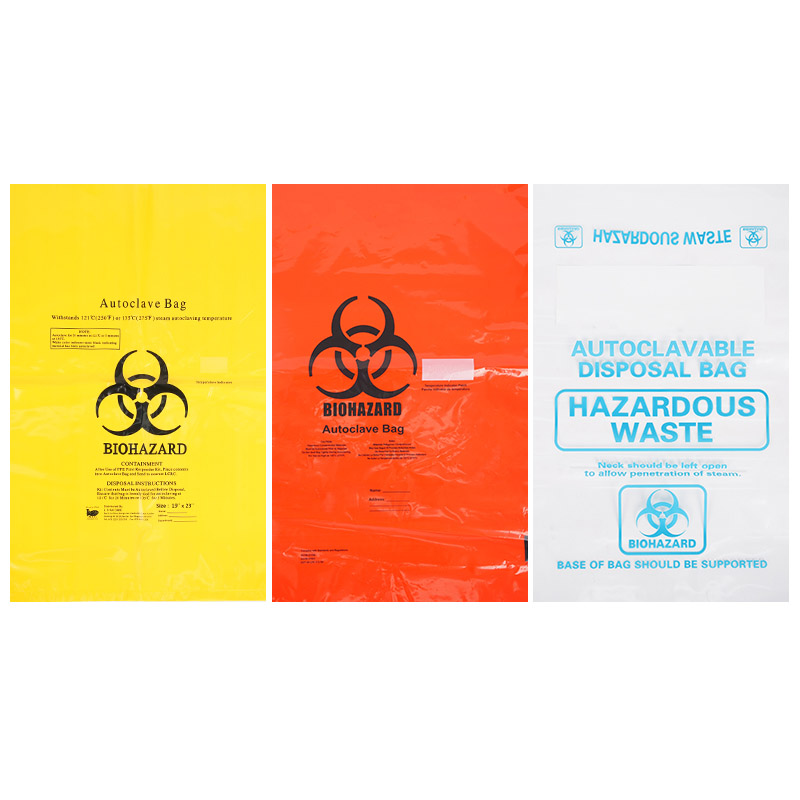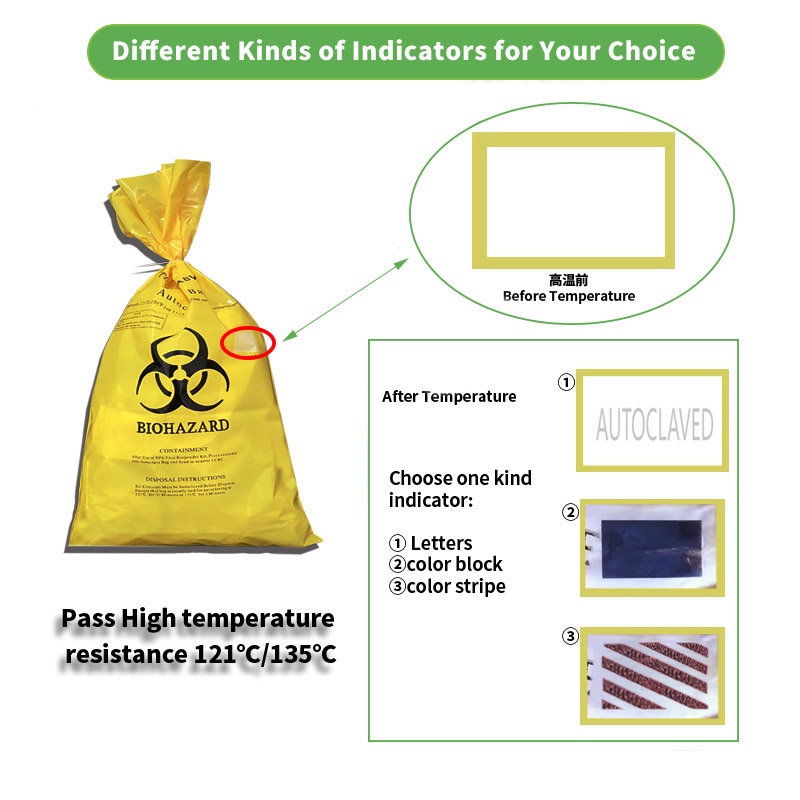What is the purpose of autoclave biohazard bag
Autoclave biohazard bags are specifically designed for the safe containment and sterilization of biohazardous waste materials. These specialized bags are commonly used in healthcare facilities, laboratories, research institutions, and other settings where potentially infectious or hazardous materials are generated.
 Autoclave resistant biohazard plastic bag can be sterilized in 20 minutes at 121°C and in 5 minutes at 135°C. The high-temperature indicator will turn gray when autoclaving is complete.
Autoclave resistant biohazard plastic bag can be sterilized in 20 minutes at 121°C and in 5 minutes at 135°C. The high-temperature indicator will turn gray when autoclaving is complete.
 The use of autoclave biohazard bags serves several important purposes:
1. Pathogen Elimination: By subjecting biohazardous waste to autoclave sterilization within biohazard waste bag, the bags ensure the effective elimination of pathogens, such as bacteria, viruses, and spores. This process is vital for mitigating the risk of cross-contamination and preventing the spread of potentially harmful microorganisms.
2. Environmental Protection: Autoclaving biohazardous waste before disposal helps safeguard the environment by minimizing the potential impact of hazardous materials. By ensuring that contaminated waste is properly decontaminated, autoclave biohazard bags contribute to environmental responsibility and sustainability.
3. Occupational Safety: The use of autoclave biohazard waste bag enhances the safety of healthcare workers, laboratory personnel, and other individuals involved in waste management processes. By effectively sterilizing biohazardous materials, the risk of exposure to infectious agents is significantly reduced, promoting a safer work environment.
4. Regulatory Compliance: In healthcare, research, and related fields, adherence to stringent regulations and guidelines for the handling and disposal of biohazardous waste is paramount. Autoclave biohazard bags play a key role in ensuring compliance with industry standards and legal requirements, bolstering overall safety and hygiene practices.
The use of autoclave biohazard bags serves several important purposes:
1. Pathogen Elimination: By subjecting biohazardous waste to autoclave sterilization within biohazard waste bag, the bags ensure the effective elimination of pathogens, such as bacteria, viruses, and spores. This process is vital for mitigating the risk of cross-contamination and preventing the spread of potentially harmful microorganisms.
2. Environmental Protection: Autoclaving biohazardous waste before disposal helps safeguard the environment by minimizing the potential impact of hazardous materials. By ensuring that contaminated waste is properly decontaminated, autoclave biohazard bags contribute to environmental responsibility and sustainability.
3. Occupational Safety: The use of autoclave biohazard waste bag enhances the safety of healthcare workers, laboratory personnel, and other individuals involved in waste management processes. By effectively sterilizing biohazardous materials, the risk of exposure to infectious agents is significantly reduced, promoting a safer work environment.
4. Regulatory Compliance: In healthcare, research, and related fields, adherence to stringent regulations and guidelines for the handling and disposal of biohazardous waste is paramount. Autoclave biohazard bags play a key role in ensuring compliance with industry standards and legal requirements, bolstering overall safety and hygiene practices.


